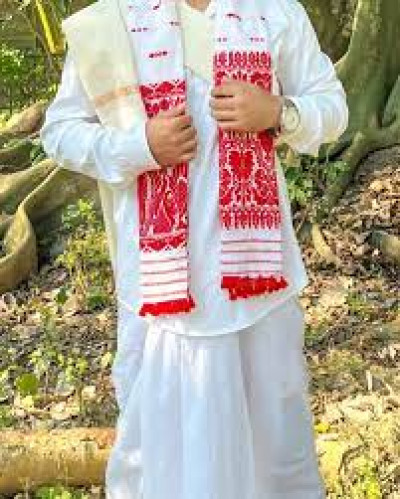Detailed Notes
Main Components of Assamese Men’s Traditional Dress
-
Dhoti – A long piece of cloth draped around the waist and legs, usually made of cotton or silk.
-
Kurta – A long tunic-style upper garment, often paired with the dhoti.
-
Gamusa – A rectangular handwoven cloth, usually white with red borders, worn around the neck or shoulders. It is the most recognizable cultural symbol of Assam, representing respect and honor.
-
Mibu Galuk - Some tribes, like the Mising, may wear a shirt-like garment called mibu galuk over the dhoti.
Cultural Significance
-
During Bihu festivals, Assamese men wear dhoti and gamusa while performing the traditional Bihu dance.
-
At weddings and religious ceremonies, men prefer silk dhotis and kurtas, showcasing Assam’s rich weaving tradition.
-
The Gamusa is also gifted as a mark of respect, making it an integral part of Assamese social life.
Fabrics and Heritage
The attire is often handwoven with cotton or Assamese silks like Muga, Pat, and Eri. Each fabric reflects the craftsmanship of Assamese weavers, preserving the state’s textile heritage.
